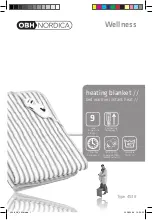
16
IREPPY - 1404 - 4238051_01
4.5.
HEAT RECOVERY ENERGY EFFI
-
CIENCY
Generally heat exchanger energy ef-
ficiency is defined as the relationship
between actual energy exchanged be-
tween the two air masses (extract air
and supply air) and the ideal energy:
η =
Q
real
Q
ideal
If the air flow rates are equal (supply and
extract), the efficiency becomes the ratio
between temperature difference:
η =
Q
real
Q
ideal
η =
t
supply air
- t
external air
t
internal air
- t
external air
For example, if:
t
external air
= -5°C
t
internal air
= 20°C
The supply air temperature is determined
once the efficiency of the heat recovery
unit is known.
Then:
t
supply air
=
= η × (t
internal air
- t
external air
) + t
external air
So if
η = 0.9 with the values shown you
have:
t
supply air
= 0,9 × (20+5)-5 = 17.5°C
The directive is split into two steps: the
first in 2013 and a more restrictive one in
2015.
In RePuro, not only do the fans greater
than 125W already respect the 2015 lim-
its, but even those of lower capacity do.
Certification ErP 2015
E
r
P
2015
With the implementation of the Kyoto
Protocol the European Union has fixed an
objective to reduce by 20% energy con
-
sumptions, by 20%
CO
2
emission and to in-
crease by 20% the renewal energy sources
by 2020.
These measures, known as 20-20-20 also
involves the ventilation industry.
The Product Directive 2009 (known as ErP
2015, Energy related Products Directive),
has established that for all types of fans,
with capacities between 0.125kW and
500kW, which operate as “stand alone” or
as components within a system, must have
a minimum efficiency depending on the
type of fan and its capacity. This efficiency
is not given only to the motor but for the
assembly of motor + controller (for exam-
ple, inverter) + Fan.
Summary of Contents for RePuro 100
Page 55: ......
















































